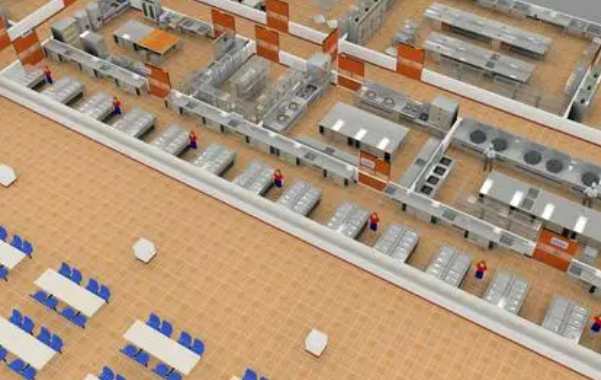
The absence of domestic manufacturers in PDK has affected the development of domestic EDA industry to some extent. Relevant people told the semiconductor industry observer reporter.
Third, the lack of talent investment;
Talent shortage is a key factor limiting the development of domestic EDA, weak research and development team can not support a large number of difficult tasks. The root cause of this appearance is the lack of industry investment in EDA.
Statistics show that there are about 1500 people working in EDA software development in China, but less than 300 people are working in local EDA companies and research units. The rest are mostly working in member companies. When magnified to **, compared to the 7000 + R&D personnel of Synopsys (more than 5000 of them are engaged in EDA research and development, the rest are engaged in IP research and development), this gap * is obvious.
Finally, in terms of R&D investment, there is also a gap between China and its members;
According to semiconductor industry observation, among the current local EDA companies, even if the team size is large and established for a long time, the research and development funds they spent in the past ten years is only a few hundred million, compared with foreign competitors' annual investment of billions (distance: Synopsys spent about $810 million on research and development in 2019), which is a drop in the bucket. If domestic EDA wants to further develop, increase investment is also imperative.
How to break through?
Now that we know where the gap is, what domestic EDA needs to do is to break each other.
Although the influence of members in the EDA industry is strong enough, the profit state of the EDA industry makes it impossible to attract enough investors, start-ups and talented enough to invest in this field, so domestic EDA wants to break through, still need to spend a little more thought and effort.
Faced with the problem of product dispersion and lack of comprehensive, I believe those EDA manufacturers who have received several rounds of investment must be rubbing their hands, increasing investment in research and development, actively expanding the field to be developed, to meet the diverse needs of downstream design and manufacturing. However, it would be a great boost and encouragement for them to get support from various sources such as regional funds.
As for the lack of integration with the process, it is necessary for domestic fabs to improve their own manufacturing technology and strengthen cooperation with fabs. But we should also be clear that the iron needs to be hard.
When it comes to the problem of talent shortage, it needs to be solved from the root.

On the one hand, the reason why there are fewer employees in EDA industry is that EDA development itself has a high threshold, requiring comprehensive talents such as computer and mathematics; On the other hand, overall pay is low. This makes many EDA, especially young EDA, turn to AI and Internet industry, which requires manufacturers to solve each problem. In order to meet the demand and flow of talents, EDA members at home and abroad also set up research and development centers in Nanjing, Wuhan, Chengdu and other places.
However, in our opinion, if we want to solve the talent problem of EDA, we not only need improved treatment, but also use equity incentives and other ways to let the spirit of the owners to do product development, so as to attract more people to invest in it, and then produce the best results.
Now, local EDA manufacturers are also in the field of their own expertise in a single breakthrough, if they can from the point to the surface, development, to the next level, to create local EDA competitiveness, but this needs the joint efforts of all sectors of the industry chain.
(1) Visual inspection Visual inspection is the use of human eyes to carry out some simple inspection, such as surface dents, pits, scratches, etc. * It is important to check whether the weld hole is in the center of the pad and the integrity of the wire pattern.
(2) Connectivity through holes For multi-layer circuit boards to conduct connectivity tests, the purpose is to find out whether the PCB graphics have connectivity.
(3) Insulation resistance of the circuit board Insulation resistance is a resistance of the printed circuit board insulation components to the external DC voltage. Choose two or more wires with close spacing and insulation, first measure the insulation resistance between them, after humidifying and heating for a period (the relative humidity in the box is about 45 degrees Celsius, 10 hours to two days), put them in the room for one hour, and then measure the insulation resistance between them.
(4) Weldability of welding pad Weldability is used to measure the wetting ability of solder on printed graphics when components are welded to the printed circuit board, which is generally expressed by wetting, semi-wetting and non-wetting. When wet, the solder can flow and expand freely on the wire and pad to form adhesive connection. Semi-wetting, the solder first wets the surface of the pad, and then forms the solder ball in some irregular places of the pad because of improper wetting. Without wetting, the solder accumulates on the surface, but does not form an adhesive connection to the pad surface.









